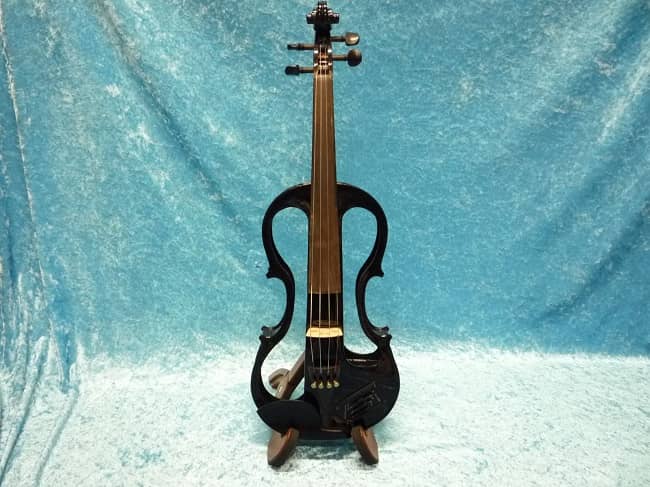
Electric violins are violins electrified with built-in pickups to generate electronic sound. People have been using them in both classical and non-classical music, including hip-hop, pop, country, rock, and many more.
These instruments are an excellent pick for your summer music camp because you can practice silently without disturbing others.
Besides, you will get many opportunities to play with new techniques and explore your creativity. However, before using one, you should understand how they operate.
If you don’t have much idea, keep reading the following sections.
Structure
Unlike the hollow body of an acoustic violin, electric versions feature a solid frame. Such a construction prevents unwanted feedback from the resonances which we often face in hollow musical instruments.
Multiple models have the semi-hollow architecture to deliver approximations of classical violin tones. The classical violins usually come with four strings, while their electrical counterparts feature four, five, or more lines.
5-string violins are the most available ones, but you can find violins with ten strings or even more. Classical ones are comparatively lightweight as well.
On the other hand, the weight of electric violins can cause hand and shoulder fatigue. Most advanced models are employing minimalistic design to overcome this problem. They also utilize glass, carbon fibers, and similar lightweight materials.
Design
Classical violins feature some essential parts, including f-holes, scroll, tuning pegs, ribs, end button, soundboard, etc. All of them fulfill basic functions. Some elements may not be part of an electric version for a few reasons.
Even the design of the electrical music instruments does not follow any common structure. The manufacturers have to preserve specific elements like neck, tuning pegs, fingerboard, though. They are allowed to move the pieces for a better visual appearance or improved functionalities.
If we consider the soundboard vibrations, classical violins’ bodies shiver more than electric ones. As a result, you have to go through complexities to nuance the notes while using an electric violin.
Sound transmission
Both classical and electric units need a medium to transfer the string’s vibration to the soundbox or amplifier. In an electric violin, a few pickups located in the bridge are responsible for this transmission.
Signal quality relies mainly on the bridge type, pickup type, and how many pickups it carries. Piezoelectric, electrodynamic and magnetic pickups are pretty standard. Similarly, acoustic models cover a classical bridge to send the vibrations to their soundbox.
Magnetic or electrodynamic pickups are usually integrated below their fingerboards. This kind of arrangement assists in getting rid of interferences with other sound-producing parts.
Sound amplification
Electric violins don’t include any soundbox for natural amplification. Instead, they require an external tool like an amplifier or speaker to enhance the generated sound from the strings. Otherwise, nobody will hear the sounds.
It is the reason why people can practice with an electric violin silently. One of the best benefits of these amplifiers is that they provide reliable services for a couple of years. Just make sure to select one that is capable of generating your desired tone.
Note that the melody does not reach a violinist player directly. It takes a while to come after being enhanced by the speakers. So, the violinists must adjust the timing to match the slight gap. When it comes to acoustic violins, the sound will reach everyone from the moment you start to play.
Vibrations from the strings result in sounds that are later improved in a soundbox. The final outcome is a natural tone rather than an electric signal. However, you can achieve a natural melody using minor effects in your electric violin. Still, an acoustic model will be a better choice for classical music. If the electric violin mainly generates raw signals, it will be perfect for metal, rock, and pop.
Conclusion
After reading all the differences, you may wonder whether an acoustic violin or an electric violin is better. To be honest, it depends on your goals. The formers give an ideal representation of a violin’s original sound.
They are inexpensive but have a great build quality. But they don’t let us experiment with tones and amplification techniques like electric violins. Hence, decide which one you need and buy accordingly.
Leave a Reply